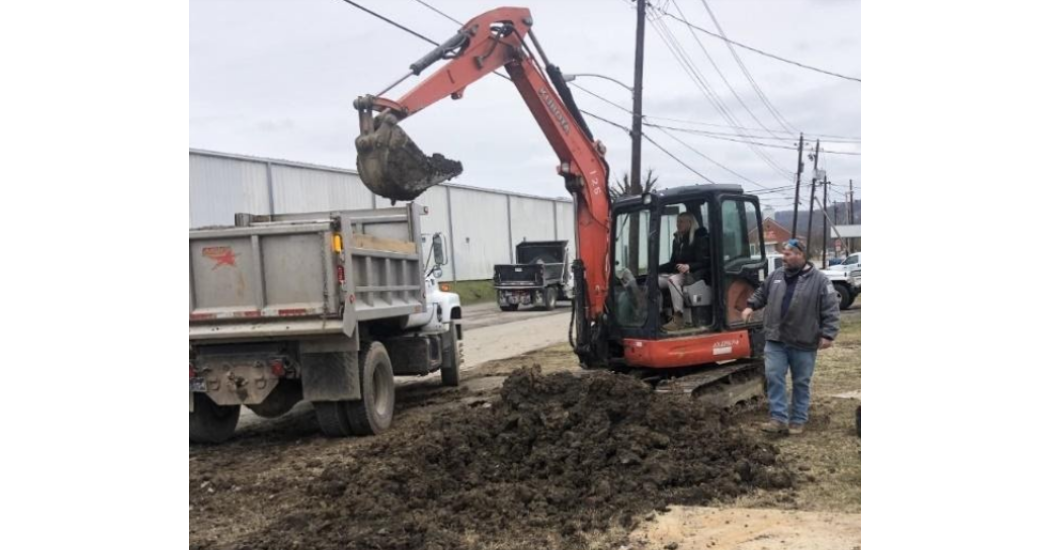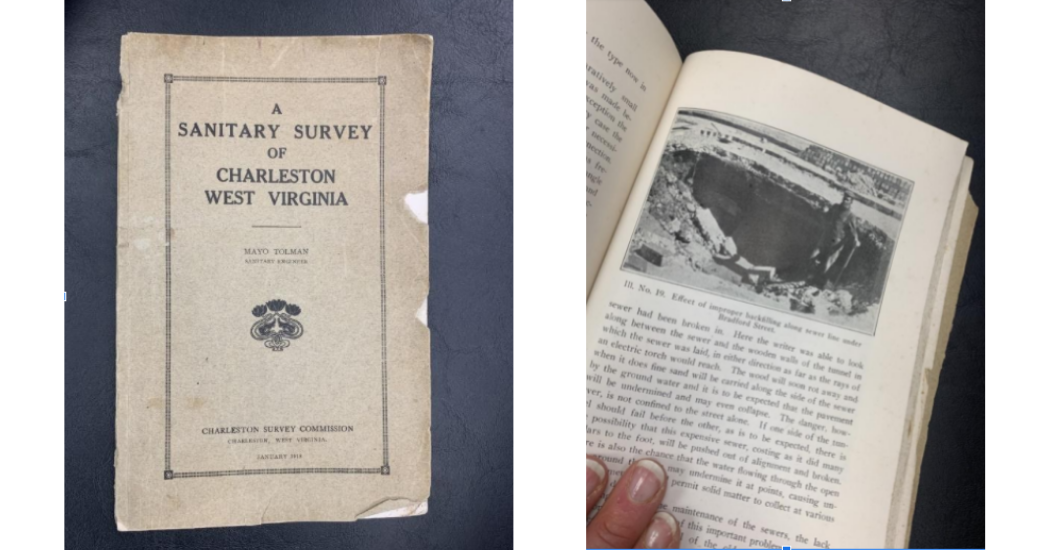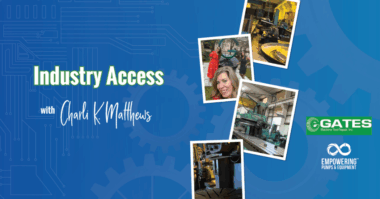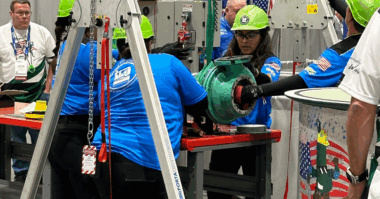Empowering Pumps & Equipment invites our community to nominate industry professionals, so we can shine a light on the professionals behind the critical infrastructure that we rely on each and every day. We are proud to have Jenelle Armstrong as our #PumpTalk Celeb! She is the Engineering Manager at the Charleston Sanitary Board and has much knowledge to share with us.
Q: How did you get started working in your field?
Pure good luck! I was an ocean/civil engineer working for a large oil company, making bank and hating it. I was bored and unhappy with their approach to environmental protection (or lack thereof). I had an opportunity to change jobs and work for an environmental consulting firm in West Texas (where my husband was stationed) that specialized in water and wastewater. Best decision ever!
Q: What do you love the most about your job?
Discovering, repairing, and maintaining a sewer system is like traveling back into time to see how a city developed and grew. I am an infrastructure detective taking very few visual clues (i.e. manholes, uneven road settlement and/or old mapping) to uncover unknown sewers and hidden vaults.
I love working in the water and wastewater industry. I feel blessed to be at the nexus of protecting the environment, preserving human health and allowing for economic development. Each day is a new opportunity to solve complex challenges. Wastewater treatment and conveyance is especially exciting to me because even after 24 years in the industry, I am still constantly learning new things. Recently when Mark (our Collection Systems Manager) asked if I wanted to try my hand at the controls, I was terrified, so of course, I said “heck yes” (see me in action in the photo below)
Q: What are you most proud of?
Working to towards obtaining my operator’s license. Engineers spend six to twelve months designing water and wastewater facilities but operator’s spend forty+ years operating and maintaining them. I spent the first 20 years of my career trying to design facilities to meet all of the required objectives but to also be as flexible and as easy to operate as possible. Within the past year, I changed jobs to work directly for the local sewer service provider (Charleston Sanitary Board) as their Engineering Manager. I immediately became an OIT (Operator in Training) and I am on my way to take my exam to be a Class 1 Wastewater Operator in September.

Q: What advice would you give to someone considering this line of work or new to the field?
Anywhere and everywhere … water is the universal thread of civilization. The water industry is both historic and futuristic at the same time. A career in water allows you to work in your hometown or allows you to travel the world, it is completely up to you!

Q: Can you talk about a project you recently worked on?
Bradford Street is located in downtown Charleston, West Virginia. In 1918, a book titled, “A Sanitary Survey of Charleston, West Virginia” was published. The book highlighted the sewer on Bradford Street, specifically showing a photo of the “Effect of improper backfilling along sewer line under Bradford Street”. A little over 100 years later, we received a call regarding a sinkhole forming along the same street. Our initial camera investigation showed large diameter vitrified clay pipe (VCP) with longitudinal cracks along the top of the pipe. At the end of the sewer, the camera investigation showed a strange concrete box (see photo), that we began to call the “mystery box”. It appeared to be a buried concrete box with a smaller pipe with flow coming from the other direction. We did not have any record drawings or other data on this strange underground box and we could not send the camera any further because it kept falling “over the edge” of the structure and dropping into an abyss. We investigated from a downstream combined sewer overflow structure, but it had a large segment of VCP pipe that had broken off upstream that was lodged into the pipe and the camera couldn’t get past it. Unfortunately, we were forced to excavate to find out what was happening and eliminate the sinkhole. It took weeks of excavation and carefully placed trench boxes to reach the pipe. We found a large hole at the top of the pipe and using that hole we were able to get our first view of the mystery box. It was a buried concrete transition box with sloped sides with a 24-inch VCP flowing into the box and an 18-inch pipe flowing out and a small pipe carrying stormwater from an intersection drain. Our crews replaced the damaged VCP with new PVC pipe and added a manhole to be able to access the sewer in the future without having to excavate the entire block. After the pavement was replaced, it was hard to tell that there was ever a problem… under the next time that “improper backfill” rears its ugly head.
Virginia Street Pump Station CSO Valve Replacement
Recently we found that our backflow preventor valve at the CSO discharge at the Virginia Street Pump Station was missing. The 48-inch concrete pipe originally had an in-line duckbill style valve located within the pipe at the discharge to the Elk River. This valve prevents river water from entering the wet well at the pump station during high flow events (reducing downstream combined sewer overflows). While we are not entirely sure where the valve went, we know we needed to replace it. After looking at our options, we purchased a 48-inch Red Valve Checkmate style valve. Last week our maintenance contractor, Marker, successfully installed the new check valve and secured it into place.
Connect with Jenelle Armstrong on Twitter @jenlpaso and @wipesclogpipes




